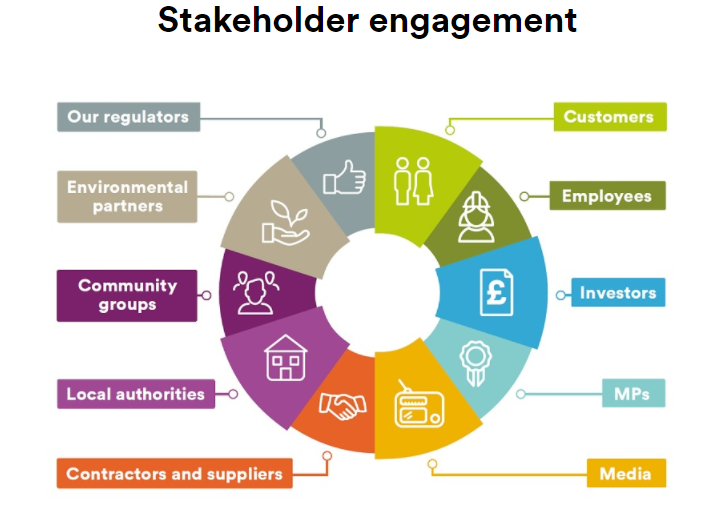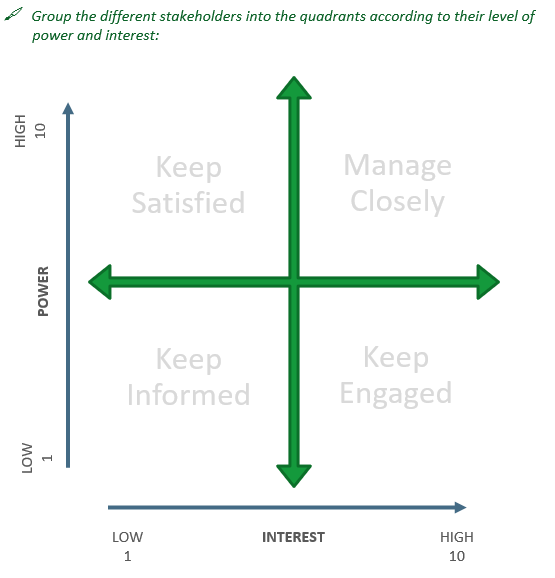Introduction
A stakeholder analysis is an important tool to identify key people that can influence the success of your organisation and projects. It helps you to collect and analyse qualitative information to better understand their needs and interests. By identifying those people and figuring out how to best manage them, you can make a big difference to your organisation.
Why
";
This toolkit is helpful for your organisation when:
- You need to understand who can influence your activities positively or negatively.
- You want to better communicate and engage with different stakeholders such as your beneficiaries.
What you can expect
In eight steps, this toolkit will support you to identify appropriate strategies and approaches for stakeholder communication and engagement, and how to include key stakeholders in decision-making processes.
Step 1: Identify your stakeholders
- The first step is to brainstorm who your stakeholders are.
- Write the names of all the possible people or organisations who could be affected by your work or could influence the work of your organisation on post-its.
- If you list organisations, remember that you have to identify the correct individual within a stakeholder organisation.
[embed_yt id="9Fzfrcqqv5o"]
Step 2: Make groups
- Once you have listed all stakeholders, place the post-its on the board grouping similar stakeholders in categories
- Use categories such as staff, decision makers, beneficiaries, partners, interest groups, potential opponents, donors etc.
- The overview below of categories for stakeholder engagement (source: unitedutilities.com) can also inspire you when creating categories.

Step 3: Set priority
- You may now have a long list of groups of people and organisations.
- Some of those stakeholders may have the power to directly influence your work, some may be very interested in what you are doing, others may not care as much.
- Remember that the beneficiaries in the community have a high interest in your project and are key in making it succesful. It is our advice to list them as 'high power, high interest'.
- Look at each stakeholder group and rate them based on their power and interest using a rating scale from 1 to 10.
Step 4: Map your stakeholders
- Based on the rating, map out your stakeholders on a grid classifying them by their power over your work and by their interest in your work.
- Place the name of each stakeholder (or group) on the grid.
- Use this format to create your stakeholder map.
Step 5: Analyse your stakeholders
- The power/interest grid will help you map your stakeholders in four quadrants.
- A stakeholder’s position on the grid shows you the best way to deal with them.
- You will have stakeholders that you need to:
- manage closely
- keep satisfied
- keep engaged
- keep informed

Step 6: Understand your stakeholders
- It is crucial to develop a good understanding of the most important stakeholders, especially those with high power. Remember that your beneficiaries are also part of this group.
- Map out who they are, why they support you, what they want from you and how they are likely to respond, so that you can work out how to win their support.
- A good way of understanding your stakeholders is to directly talk to them and ask them those questions.
Step 7: Make an engagement plan
- Explore the optimal way for managing the relationships with your different stakeholders.
- Higher engagement can include an invitation to important meetings to ensure that their opinion is taken into account and their needs and concerns are addressed.
- Those of a lower priority should be kept informed of developments through regular e-mail updates, reports or briefings.
- Watch the short video below by Social Impact Consulting to understand the importance of NGO stakeholder engagement.
[embed_yt id="xORKvhc3P80"]
Step 8: Revisit and revision
- Consider that new stakeholders might appear and old ones might increase or decrease their influence levels.
- Ensure therefore that you revisit your engagement plan regularly and revise if and when necessary.
.
Keys To Success
- Do not underestimate the power of the communities you work for: they have a high interest in your project and are also key in making it succesful
- Include your most powerful stakeholders in all key decisions.
- Stakeholder analysis is a continuous process because stakeholders and their interests can change over time.
Challenges
- Stakeholder understanding is often based on assumptions because organisation is reluctant to contact stakeholders directly to ask them why they support them and what their expectations are.